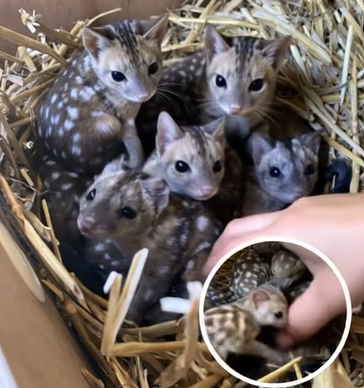Ecologists at Mt. Gibson Wildlife Sanctuary in Western Australia have celebrated an extraordinary milestone: the birth of the first baby western quolls, also known as chuditch, at the site. During a routine survey, researchers discovered the tiny marsupials nestled safely in their mothers’ pouches — a clear sign that reintroduction efforts are paying off. For the conservation team, this moment was not just exciting but deeply symbolic of progress in restoring balance to Australia’s ecosystems.
Western quolls, about the size of a domestic cat, are agile nocturnal hunters that help regulate populations of smaller animals, playing a crucial role in maintaining ecological health. Once widespread across mainland Australia, their numbers plummeted due to habitat destruction, invasive species, and human activity. Today, they survive in only a fraction of their original range, making each successful breeding event an important victory for conservationists.
The Australian Wildlife Conservancy (AWC) has been leading intensive efforts to return quolls to their former habitats. Through carefully planned relocations, predator control, and ongoing monitoring, AWC has worked to give the species a fighting chance. The birth of these new joeys is a promising sign that the quolls are not only surviving but beginning to establish thriving populations at Mt. Gibson and beyond. These births show that the sanctuary is becoming a safe, sustainable home for the species.
For conservationists, the arrival of these young quolls is a story of hope and resilience. It underscores how dedicated efforts, combined with community support and awareness, can reverse the decline of vulnerable species. Every donation, volunteer hour, and voice raised for conservation makes a difference. The tiny lives discovered at Mt. Gibson are more than a scientific achievement — they are a reminder that when nature is given the chance, it can recover and flourish.
